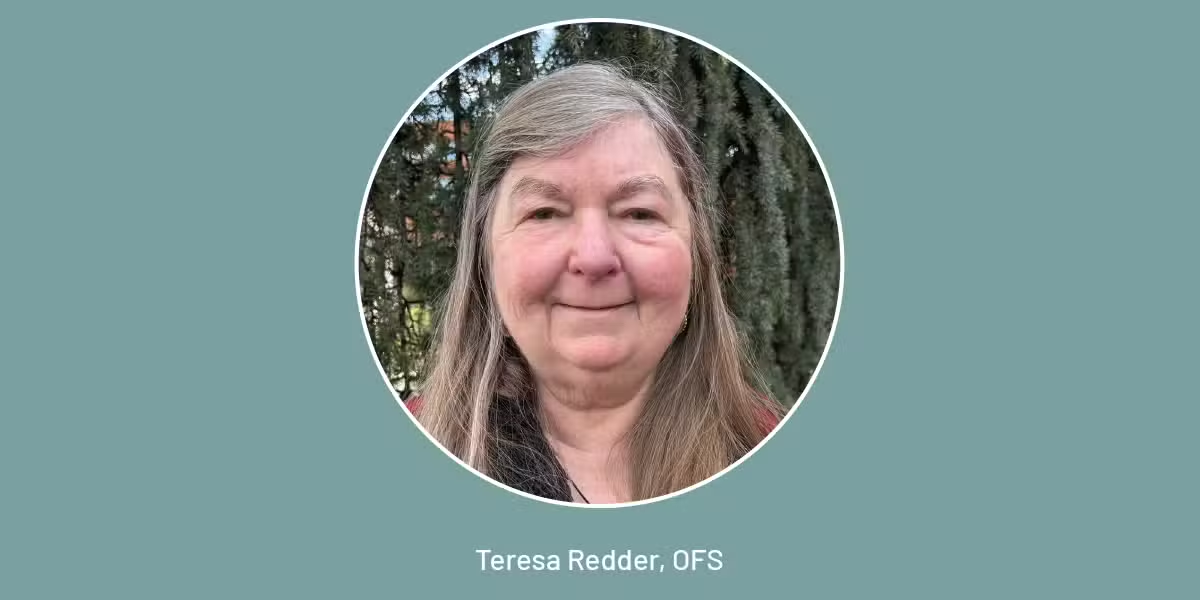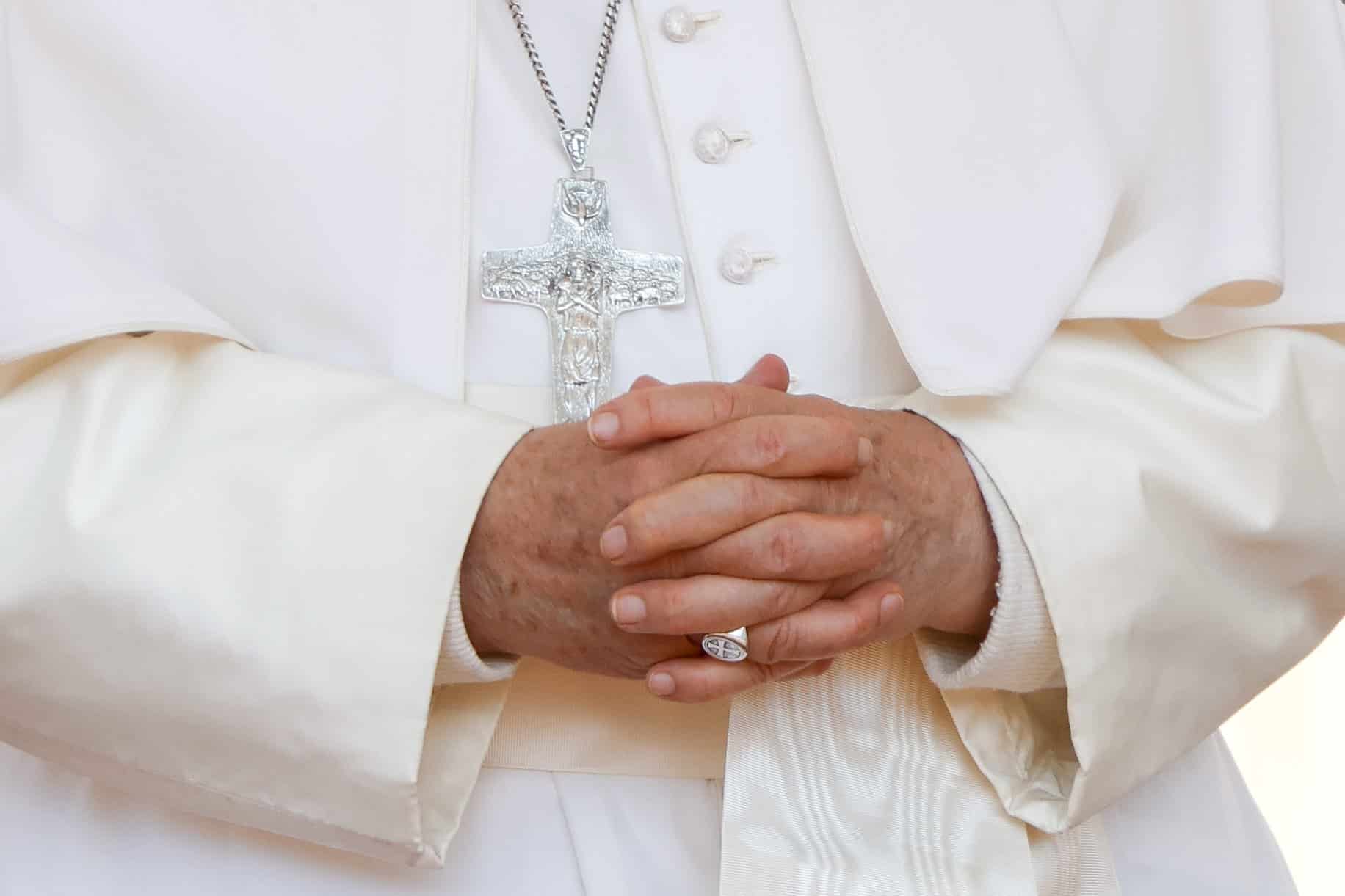When some Catholics hear the word evangelization, they might not know where to start.
This author provides a road map to building and sharing our faith.
Many Catholics are at a loss, not just about how to evangelize, but even about whether to do it, in no small part because they have never experienced evangelization themselves and therefore cannot relate to the experience of those encountering the Gospel for the first time. For many Catholics, especially older ones, the faith is to them as water is to a fish. It’s everywhere. It’s assumed. It’s the background and matrix of their whole lives. Stepping outside the world in which the faith is simply “the way things are” is next to impossible for many Catholics, as is relating to the process whereby somebody from outside that world really wrestles with the question of discipleship to Jesus.
Indeed, even using phrases like “discipleship to Jesus” and “evangelization” strikes many Catholics as vaguely foreign and “Protestant.” You just go to Mass, say your prayers, and try to do the decent thing. Don’t push your religion on people like those TV preachers with big hair. What’s the big deal?
But, in fact, the Church, as St. Paul VI said, exists to evangelize. And increasingly, many younger Catholics are showing us why it is necessary for Catholics to grasp this. For the demographic reality of the shrinking Church in the developed world (a reality that will only increase in the future if we do not act), is that the faith is no longer something you are born into and live out automatically like a sort of ethnicity.
It is chosen, particularly if you live in the United States, where all the most intimate and personal things about one’s identity are increasingly chosen. It is no longer simply assumed that “Because I am Irish or Italian or Hungarian, I am a Catholic.” More and more, we live in a world where, if Catholics are going to be Catholics (even the ones raised as Catholics), it will be because they have chosen to be disciples of Jesus Christ in the heart of his Church.
Accordingly, if we Catholics are to bear witness to that faith, it is necessary for us to understand something of the process by which people typically come to faith in Jesus and his message. As people in medieval times understood, “That which is received is received according to the mode of the receiver.” So there is no point in Catholics demanding that non-Catholics or nonbelievers (or Catholics struggling with their faith, often in the teeth of great scandal and trauma) know our lingo or begin where we want them to begin in learning the faith. We must go to them and meet them on their terms, just as God himself did when he came to us in human form in the Word made flesh.
Happily, Sherry Weddell’s book Forming Intentional Disciples helps us do exactly this. Weddell is the cofounder and director of the Catherine of Siena Institute, which is dedicated to helping Catholics pursue discipleship to Jesus more deeply and to helping them identify their charisms so that they can live that life of discipleship and apostolic mission to the full. In Forming Intentional Disciples, she addresses the central problem facing the Church: creating a culture in which all Catholics see themselves as intentional disciples of Jesus Christ, living according to his will and as apostles proclaiming him to the world.
Weddell outlines five “thresholds,” or stages, of spiritual growth typifying the experience of conversion. These five stages of growth in discipleship are not law. It is not inevitable that one will pass through them consecutively, nor that one will pass through them all, nor that one will not regress or dither among them, nor that one will not leap over a stage or two. Complicating factors like ignorance or trauma can throw wrenches into the process too.
Nor is conversion, in the Church’s experience and thought, simply for non-Catholics. It’s for everybody. “Cradle Catholics” like Ignatius of Loyola, Francis of Assisi, Blaise Pascal, and Teresa of Avila also had profound conversion experiences that transformed them. So must we all.
What are these five thresholds?
Stage 1: Initial Trust
Many people, believer or not, have some positive emotional association with Jesus Christ, the Church, a Christian believer, or something identifiably Christian. This primitive form of trust is not the same as active personal faith in God or Christ. But it is a bridge people can cross to move closer to God, and without such a bridge, nothing short of a miracle can lead to further growth.
An example of initial trust is shown in the experience of a young unbelieving college student, sick with flu, who was visited out of the blue by a Christian on his dorm floor, brandishing a bottle of Pepto-Bismol and announcing: “I heard you were sick. I brought you this.”
It’s been over 40 years, but I have never forgotten that. With that one act of kindness to a stranger, done simply out of generosity, she won my trust. And eventually, by the integrity of their lives as Christians, the rest of the fellowship of Christians on her dorm floor did likewise.
Such small acts of decency and integrity are profoundly important to forming the matrix of trust in a culture that can lead to witness later. Whether in the story of an Egyptian Muslim who was taught by nuns and never forgot their kindness to her, or (to use Jesus’ example) simply giving a cup of cold water to the thirsty, or any one of a thousand other tiny ways in which Christians can show love, kindling a tiny flame of trust in a human heart is the indispensable first step that can lead to a profound conversion. Not for nothing does Jesus warn us of the awesome responsibility of not causing a little one to stumble. And not for nothing does he likewise rejoice that the fields are ripe for harvest and urge us to serve the Lord of the harvest in small things as well as great in anticipation of abundant fruit.
Lives lived in joy, generosity, and integrity—not for show, but for the glory of Christ—can and do break down walls of distrust and give off a sweet aroma of beauty that people follow.
Stage 2: Spiritual Curiosity
Spiritual curiosity is born when a person is intrigued by or desires to know more about Jesus or some aspect of the Christian faith. This can range from mere awareness of a new possibility to something quite intense and proactive. It does not, however, equate to openness to personal change. This step, though an advance from mere trust, is still essentially passive.
Often in fits and starts, the curious begin wanting to know more about Jesus, the Church, the Bible, or the “Catholic thing.” This can be a long and complicated period of learning that can be highly idiosyncratic, since the questions will tend to revolve around the issues and challenges unique to each person’s experiences. Such persons will not dismiss “God talk” but will typically not initiate such conversations. They will quietly “take it in,” browse the Internet privately, tune in to Catholic radio or TV, or wonder about some theological question prompted by chance encounters.

Interestingly, Jesus’ pedagogy with the curious is often to raise questions. “Why do you call me good?” (Mk 10:18). “Who do you say that I am?” (Mt 16:15). “What do you want me to do for you?” (Mk 10:51). “Was John’s baptism of heavenly or of human origin?” (Lk 20:4). “Whose image is this and whose inscription” is on this coin (Mt 22:20)? He understands that the word educate means “to draw out” and that we learn best by coming to truth ourselves rather than merely being forced to repeat rote answers.
If they make the choice to follow their curiosity, then exploration, not fear and worship, is typically what happens next. Moses at the burning bush was not afraid or worshipful, but curious. Worship only began when he learned who was there, not when he didn’t know who was there. In short, wonder is the common root of all art, philosophy, science, and religious experience.
But it is not the flower. More has to happen.
Stage 3: Spiritual Openness
Openness is the critical point when a person moves from passive curiosity to acknowledge to him or herself and to God that they are open to the possibility of personal and spiritual change. This is often a difficult transition for a nonbeliever, as it can feel dangerous, crazy, and out of control. It is not commitment to change, but merely openness to the possibility of change. It is a kind of crisis because it represents the point in the spiritual journey where serious choices need to be made. The dawning and dreadful possibility emerges that God might not merely be an abstract what or why—a topic we can study abstractly like a book we put back on a shelf—but a being who is here, present in the room with us and calling to us with incalculable demands and desperately beautiful promises. We start to realize that Jesus Christ is seeking relationship with us and may indeed require something of us.
As we accompany those struggling to open themselves to God’s will, we can offer nonjudgmental truthfulness, speaking plainly of the places in our own lives where the Gospel challenges us. This is what the apostles did, detailing their cowardice, dullness, and even betrayals of Christ. Indeed, they go so far as to report Jesus’ own struggles to do God’s difficult will in the Garden of Gethsemane. Thus do we support one another in our struggles by modeling perseverance in weakness.
This phase can often be the time when it dawns on a person that because grace builds on nature, and it is Christ who chooses us first and not we him, he has always been at work in us and through us, already used us in some way for the good of others, given us gifts, or put us on the path we only now realize we are on. Helping people at this inflection point understand that God is not a threat to our freedom, but the ground of it, can help them get past the fear of openness.
Relatedly, it is sometimes beneficial to encourage those struggling with openness to ask God for a sign to direct them or to encourage them to profess to God their openness to pursuing him. We also can suggest that they enter into regular prayer, both private and communal. Moreover, this is often the time to invite them to Mass or to begin reading the Gospels or even to consider joining the inquiry phase of the Rite of Christian Initiation of Adults.
Stage 4: Spiritual Seeking
Once past the crisis of openness, people often find they are no longer able to simply wait for the tide of life to send them a message. They become active spiritual seekers. A seeker is one who moves from passivity to actively seeking to know the God who is calling him or her. Seekers ask, “Are you the one to whom I will give myself?” The seeker is engaged in an urgent spiritual quest to know whether he or she can commit to Christ and his Church.
Weddell describes seekers as “dating with a purpose.” They are no longer merely passive participants in a relationship with religion or theology. Rather, they seek God revealed in the person of Jesus Christ. All other priorities are beginning to be seen in relation to him as the center. Indeed, part of the work of this phase consists of discovering which earthly hopes, desires, and priorities we are tempted to put in preference to him and whether we are really prepared to treat Jesus as our lord and savior.
If you are mentoring a seeker, this is the perfect time for them to enter the catechumenate. If you are yourself a seeker undergoing a deeper conversion as a Catholic, this is a good time to undertake a closer study of the faith, specifically with the goal of using the gifts of the Church (especially the sacraments) to seek the guidance and grace of the Holy Spirit.
Ask the Spirit to help you cultivate your gifts and offer them (and yourself) to Christ with greater and greater freedom so as to make your acts of obedience to the Father fruitful for both yourself and for others. At the core of this stage of conversion is the experience of a soul that, like the psalmist’s, “clings fast to you” (Ps 63:9) and can no longer be content with passivity or neutrality. Active works of attempted obedience to God’s will (even if they turn out to be mistaken or failures) are what the Spirit calls us to. In the words of C.S. Lewis, “Virtue—even attempted virtue—brings light; indulgence brings fog.”
Intensified prayer, a fruitful reading of the Christian spiritual classics, and a growing hunger for the sacraments can characterize this phase, as well as a desire to practice the works of mercy or otherwise live out the virtues.
Stage 5: Intentional Discipleship
Intentional discipleship is the decision to “drop one’s nets”: to make a conscious commitment to follow Jesus in the midst of his Church as an obedient disciple and to reorder one’s life accordingly. The image comes from the story of St. Peter dropping his nets—leaving behind his former life and livelihood, his social connections, his home, and even his family—and choosing to follow Jesus Christ wherever he went, come what may (see Lk 5:4–10). It is the single most important decision a person can possibly make (which is why Jesus calls us to count the cost). But it is the goal of the Christian life—not only converts, but all Christian lives.
It can be as dramatic as St. Paul blinded on the road to Damascus or as invisible as a quiet resolve. It can be done by an atheist like Edith Stein declaring, “This is the truth!” after encountering Christ through Teresa of Avila or by a lifelong Catholic returning to his roots like Ignatius of Loyola. But however we arrive at it, that resolve to follow Jesus consciously and intentionally with our whole heart, soul, mind, and strength is what the entirety of the Christian call to discipleship is all about. Once made, that choice will henceforth be the controlling factor that will drive and coordinate everything—absolutely everything—in the life of the disciple of Jesus Christ. When we make this choice, as Paul says, “We destroy arguments and every pretension raising itself against the knowledge of God, and take every thought captive in obedience to Christ” (2 Cor 10:5). Here begins the new life.








